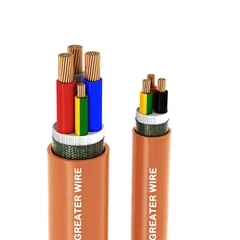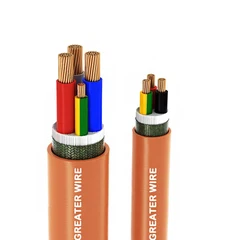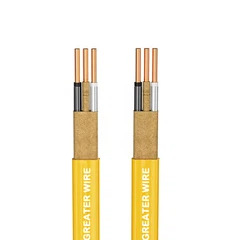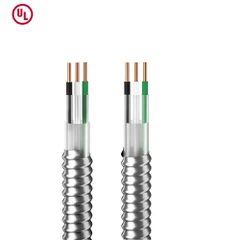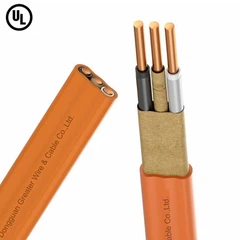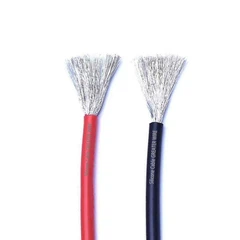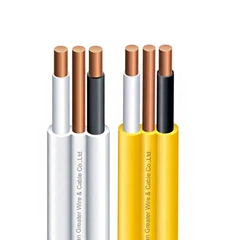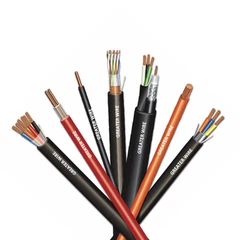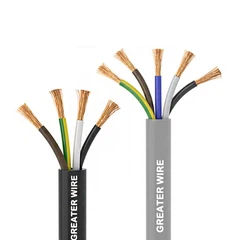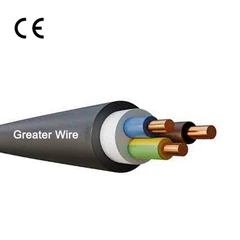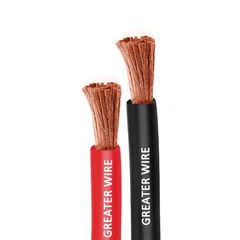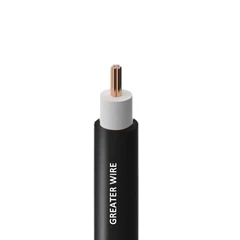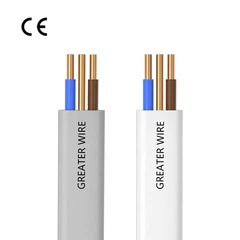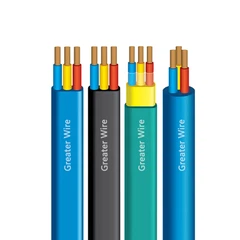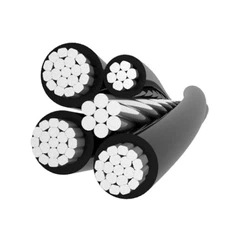1. Understanding XHHW Wire: Composition and Key Features
XHHW (Cross-Linked Polyethylene High Heat and Water-Resistant) wire is renowned for its robust insulation system and adaptability. Its primary components include:
Conductors: Typically made of copper or aluminum, XHHW conductors are stranded for flexibility.
Insulation: The XHHW insulation consists of cross-linked polyethylene (XLPE), which offers superior thermal stability and moisture resistance.
The National Electrical Code (NEC) categorizes XHHW wire for use in both dry and wet locations, with a temperature rating of up to 90°C in dry conditions and 75°C in wet environments. These properties make it a top choice for commercial, industrial, and residential wiring systems.
2. XHHW Insulation: The Foundation of Reliability
The XHHW insulation is the backbone of the wire's performance. Cross-linked polyethylene undergoes a chemical process that enhances its molecular structure, resulting in:
High Heat Resistance: Withstands temperatures up to 90°C, reducing the risk of insulation degradation in high-load circuits.
Moisture Resistance: Ideal for wet locations, including outdoor and underground installations.
Chemical and Abrasion Resistance: Protects conductors from oils, solvents, and physical wear.
These qualities ensure long-term reliability, even in harsh environments. However, grounding applications require additional considerations, such as conductivity and corrosion resistance.
3. XHHW MC Cable: Integrating Grounding Conductors
XHHW MC (Metal-Clad) Cable combines XHHW conductors with a protective metal sheath, often aluminum or steel. This configuration provides:
Mechanical protection against punctures and crushing.
Built-in grounding capabilities through the metal armor.
The NEC permits the metal sheath of MC cable to serve as an equipment grounding conductor (EGC) if it meets specific requirements (NEC Article 250.118). In such cases, XHHW MC cable can effectively support grounding systems while leveraging the insulation's durability.
4. XHHW Underground and Direct Burial Applications
XHHW underground installations are common due to the insulation's resistance to moisture and soil contaminants. For XHHW wire direct burial, the NEC mandates compliance with Article 300.5, which outlines depth requirements and protection against physical damage.
Key advantages include:
No need for conduit in many scenarios, reducing installation time and costs.
Long-term performance in damp or corrosive soils.
While XHHW is not inherently a grounding wire, its robust insulation ensures that grounding conductors within the same system remain protected. For example, a separate grounding conductor (e.g., bare copper) may be bundled with XHHW wires in direct burial applications.
5. Can XHHW Conductors Be Used for Grounding?
Grounding conductors must meet strict criteria for conductivity, corrosion resistance, and identification. According to NEC Article 250, grounding conductors are typically:
Bare or insulated.
Identified by a green or green-with-yellow-stripe insulation.
XHHW conductors are usually insulated in black, red, or other colors, which do not meet the NEC's color-coding requirements for grounding. However, XHHW can be used as part of a grounding system in specific contexts:
Equipment Grounding Conductor (EGC): When installed within an MC cable, the metal sheath can serve as the EGC, while XHHW wires carry current.
Supplemental Grounding: XHHW may be used alongside a dedicated grounding wire for added protection.
Critical limitations include:
XHHW insulation is not rated for direct use as a grounding electrode conductor (GEC).
Color-coding requirements restrict its standalone use for grounding purposes.
6. Advantages of XHHW Wire in Electrical Systems
Beyond grounding, XHHW excels in multiple applications:
Commercial Buildings: Powers lighting, HVAC, and machinery.
Industrial Facilities: Resists heat and chemicals near heavy equipment.
Renewable Energy Systems: Suitable for solar farms and wind turbines.
Its direct burial capability eliminates the need for conduit in underground runs, while the XHHW insulation ensures safety in wet environments like basements and substations.
7. Installation Best Practices for XHHW Wire
To maximize performance:
Follow NEC guidelines for burial depth and conduit use.
Use compression connectors for terminations to prevent insulation damage.
Pair XHHW with a dedicated grounding conductor in critical systems.
For XHHW MC cable, ensure the metal sheath is properly bonded to grounding terminals.
As a trusted cable supplier in the US market, Dongguan Greater Wire & Cable Co., Ltd. has the world's leading production technology and automated production lines to ensure that the quality of each cable meets UL standards (UL83, UL44, UL719, UL493, UL62, UL758, UL1569, UL66, UL1063, UL1277), and meets NEC and CSA standards. The THHN WIRE, TC-ER CABLE, XHHW WIRE, NM-B CABLE, MC CABLE, UF-B CABLE, MTW CABLE we supply are suitable for residential, commercial, industrial and power projects. As a factory direct supplier, we can provide you with the most competitive prices while ensuring fast delivery. Whether you need bulk purchases or customized services, we can meet your needs! Contact us now for free samples and quotes!

